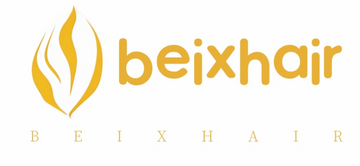Your hair texture is a fundamental part of defining your styling regimen, the type of product you use, and your approach to hair care, but a significant number of individuals cannot determine off-hand whether their hair is wavy or curly. Learning the difference between wavy and curly hair is essential for creating an effective hair care routine that enhances your natural texture rather than working against it.
The differences between wavy and curly hair go beyond appearance, encompassing factors like curl pattern, hair structure, porosity, and care needs. While these hair types share some traits and challenges, each requires specific solutions to achieve optimal health and styling results. Understanding these distinctions helps you care for your natural texture effectively.
Type of hair and pattern of hair formation
The basic difference between wavy and curly hair is the actual form of the hair follicle and the fashion in which it accentuates the emergent hair strand, where wavy hair has follicles that are either slightly curved or oval, causing hair to be in gentle S-patterns or loose waves, which range in severity between mild curvatures to more pronounced undulations.
The emergence of curly hair is a result of follicles that are far more rounded or of a more spiral nature, and it results in hair strands that develop into distinct coils, spirals, or corkscrews of various tightness and definition. The shape of the hair strand cross-section is also significantly different between these textures, with wavy hair having a more oval cross-sectional shape and curly hair exhibiting a more flattened cross-section or even a ribbon-shaped cross-section that helps it coil and twirl.

Such a structural difference influences the light reflection off the hair shaft, with the wavy hair generally reflecting more light because it has a smooth surface, whereas the curly hair can have less gloss as the light is dispersed in more directions by the curved hair. The cortex layer of curly hair also lies unevenly, and one side is thicker than the other, which also helps to form the natural curl and makes the hair more inclined to dryness and breakage.
Classification Systems and Curl Patterns
Professional systems of hair classification offer a scientific understanding of the difference between wavy and curly hair by a set of numbered categories that range between straight hair (Type 1) and highly curly hair (Type 3) with wavy hair usually classifying as Type 2 (2A, 2B, and 2C) and curly hair as Type 3 (3A, 3B, and 3C). Type 2A wavy hair has loose and barely-there waves that are easily straightened and are usually fine in texture, whereas Type 2B has more definite waves with certain frizz as well as slightly coarse texture that retains its waves better than Type 2A.
Type 2C is the most extreme wavy texture that contains strong and well-defined waves, possibly containing some curly sections, and is more difficult to straighten. Type 3A curly hair has loose, large curls that are formed around the circumference of the sidewalk chalk, whereas Type 3B curly hair is formed in springy curls, the size of a Sharpie marker, and Type 3C curly hair is formed in tight corkscrews, the size of a pencil or a straw.
Understanding these categories helps people identify their hair type and choose products and styling techniques that enhance their natural texture rather than working against it.
Differences in Porosity and Moisture Retention
The differences between wavy and curly hair extend to porosity and moisture retention. Curly hair generally has higher porosity due to raised cuticles and its spiral structure, creating more gaps where moisture can be absorbed or lost. Wavy hair, with its gentler curves, tends to have low to medium porosity, as flatter cuticles form a more effective barrier against moisture loss.

As a result, curly hair often requires more intensive treatments and richer products to maintain proper hydration, while wavy hair can easily become over-moisturized if treated the same way. Curly hair is also more prone to environmental effects, such as frizz or curl distortion, whereas wavy hair may simply appear limp or less defined when overexposed to moisture.
Understanding these porosity differences is key: curly hair may benefit from periodic deep conditioning, while wavy hair often needs lighter, more frequent moisturizing treatments to maintain optimal health and appearance.
Make-up and Hair Style
The difference between wavy and curly hair is most evident in daily care routines, as each texture requires specific styling strategies and products to bring out its best.
Lightweight mousses, sea salt sprays, and curl-enhancing creams tend to work well on wavy hair, giving it definition without adding a lot of weight or making it move differently, whereas curly hair usually needs heavier leave-in conditioners, curl creams, and styling gels, which offer a stronger hold and better ability to hydrate the hair.
There are also differences in how the hair is applied, with wavy hair frequently responding better to scrunching products and diffusing on low heat options, whilst curly hair could need sectioning, applying products to soaking wet hair, and dry service either by air or using a diffuser with special techniques such as plopping or medusa clipping.
Hair based on heat styling varies widely between these two textures, as wavy hair is typically more resilient to occasional heat styling using the right heat protectants, and curly hair is usually more delicate and can be severely damaged by frequent heat exposure, so a protective style and heat-free methods of hair styling are more recommended in these situations to maintain the curly texture and avoid breakage.
Recommendation
BEIXHAIR specializes in high-quality human hair extensions and wigs specifically crafted to fit the texture of both wavy and curly hair, and offers natural-looking solutions that not only blend well with the rest of your current hair but also allow the hair to move and feel just as natural with expert construction and the use of selected hair materials.

